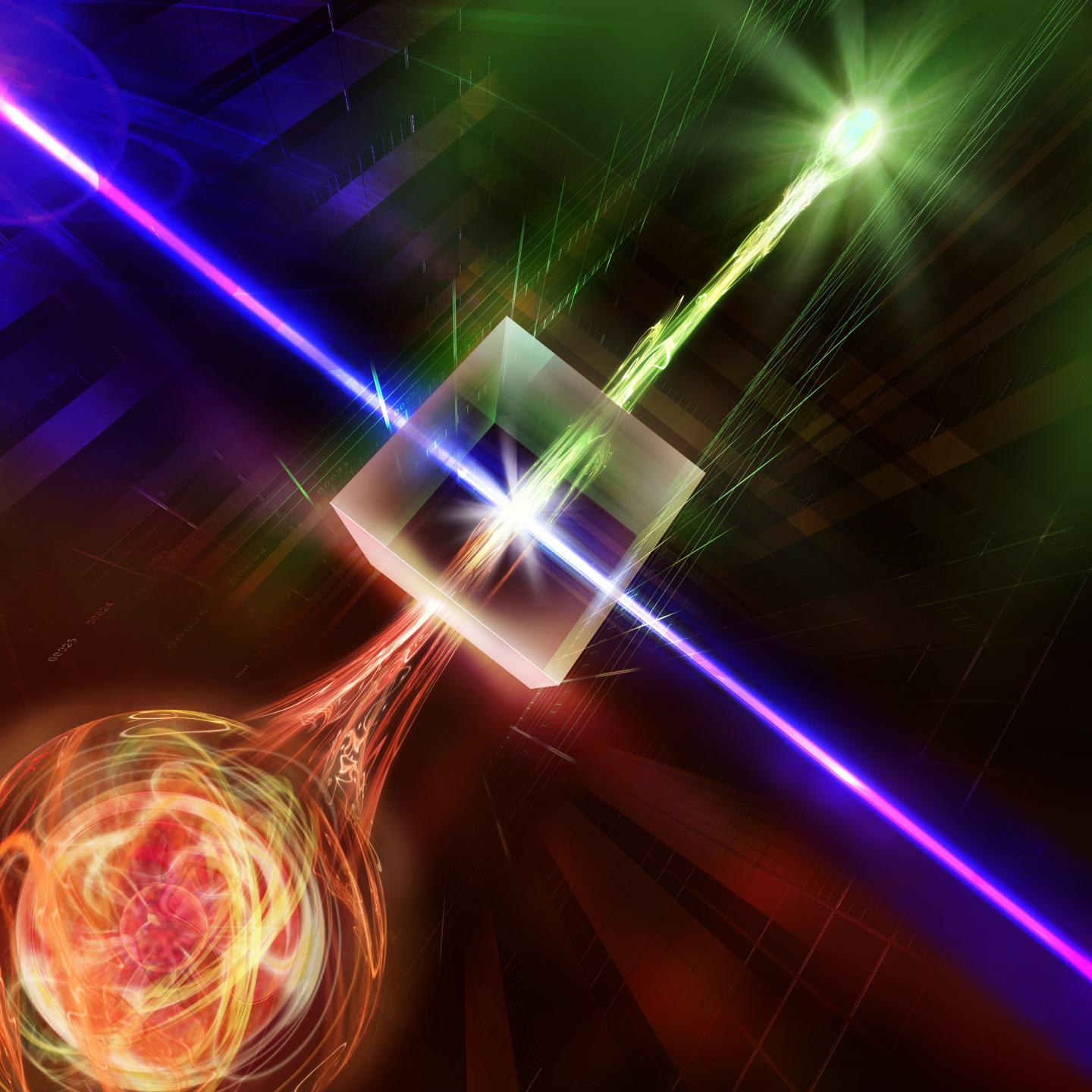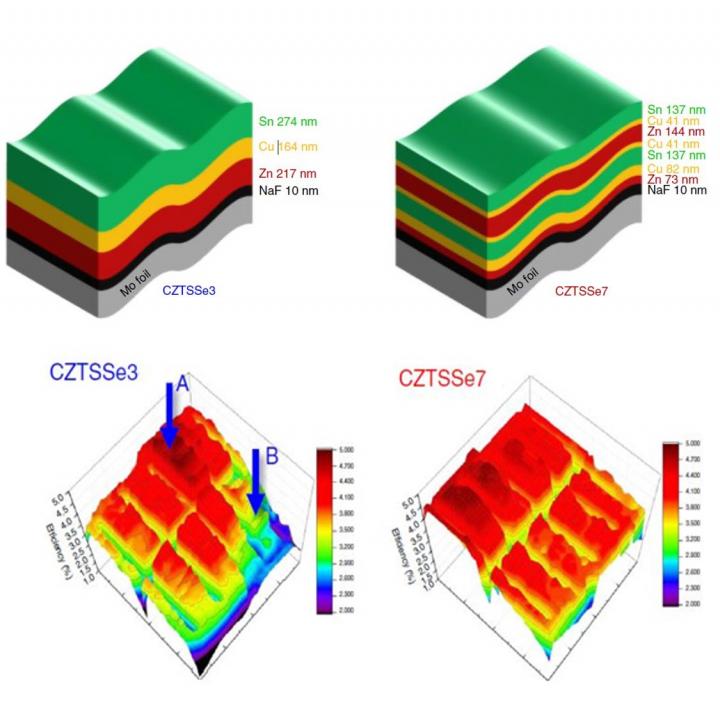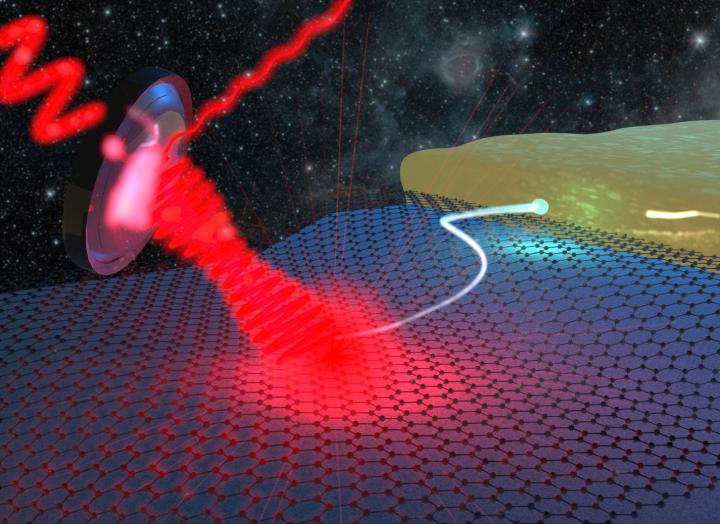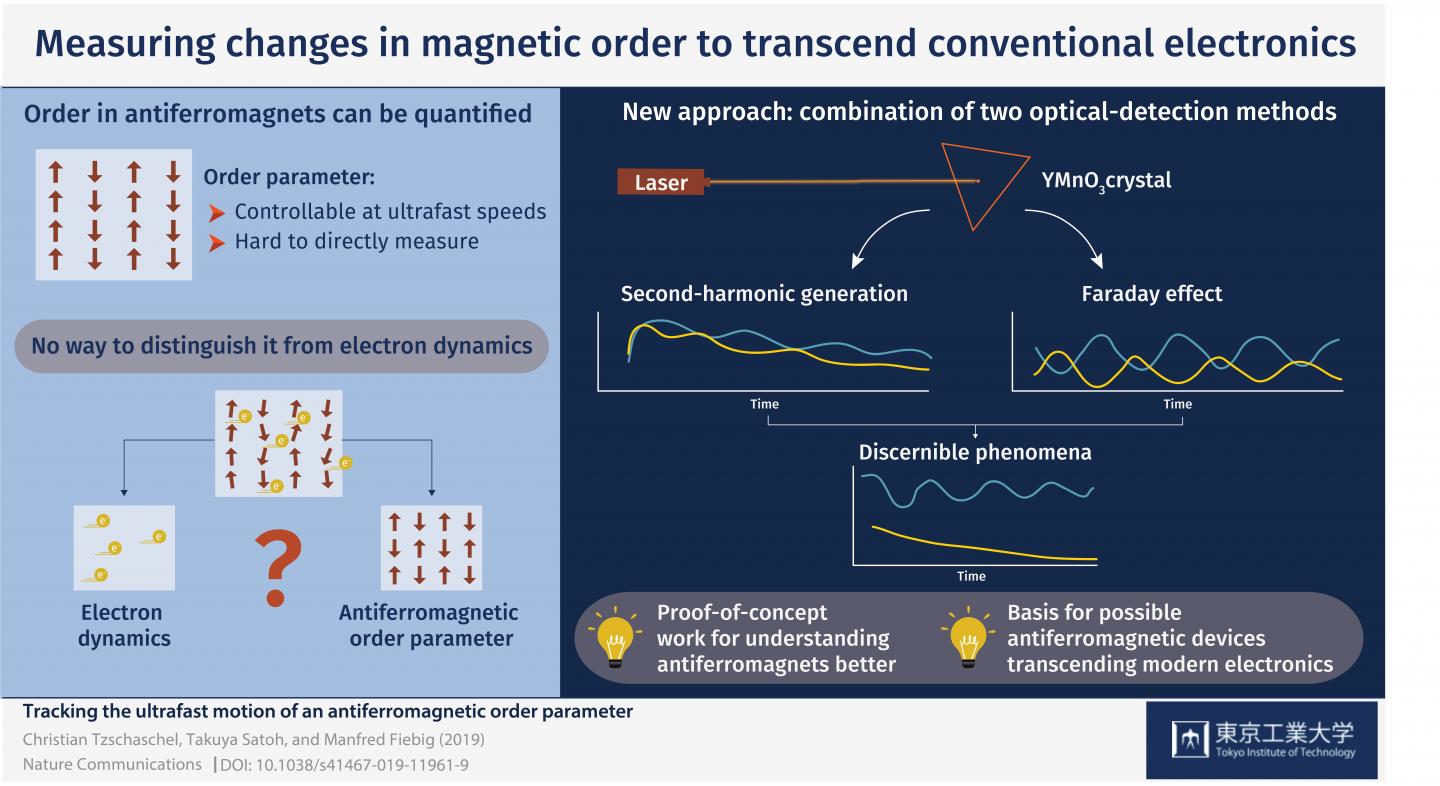
Researchers at the University of Innsbruck, funded by the US Army, achieved a record for the transfer of quantum entanglement between matter and light -- a distance of 50 kilometers was covered using fiber optic cables. Researchers said this brings the quantum internet a step closer. In a nonlinear crystal illuminated by a strong laser the photon wavelength was converted to the optimal value for long-distance travel.

(A) A comparison diagram of the existing 3-story structure of CZTSSe solar cell (left) and the newly developed multi-story structure (right) (B) A mimetic diagram showing the differences of efficiency and uniformity between the existing 3-story structure of CZTSSe solar cell (left) and the newly developed multi-story structure (right)

The image depicts a schematic of terahertz (THz) heterodyne detection with graphene. In this, two THz waves (red) are coupled into graphene, where they are combined or mixed. One of the waves is a high intensity signal generated by a local THz light source (i.e. a local oscillator), at a known THz frequency. The other signal is a faint THz wave that mimics the waves coming from space.

Combination of Faraday rotation and second-harmonic generation obtained the trajectory of an optically induced coherent spin precession. The time-resolved SHG is a valuable tool for the study of antiferromagnetic spin dynamics providing complementary information that is inaccessible by other techniques.